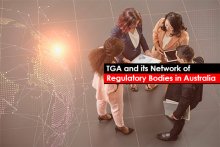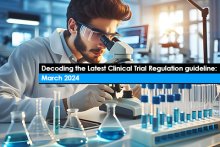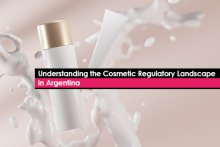Ever since the Hatch-Waxman Act came into being, the generic drugs have saved billions for both patients and healthcare systems alike and accounted for 88% of the prescription drugs sale in the United States alone. Though that emphasizes the ever-growing aspect of generic drug market share, it has resulted in mounting difficulties for both the US FDA, in terms of reviewing and processing hundreds of Abbreviated New Drug Applications (ANDAs) coming their way year-by-year, and for the generic drug industry for multiple cycle reviews slated before the FDA approval.
If one refers to FDA’s latest set of data, only 9% of ANDAs managed to get approval in the first review cycle, wherein more than 90% of new drug applications (NDAs) obtain approvals in the very first go.
In 2015 alone, approximately 24% of ANDA submissions resulted in Refuse to Receive (RTR) notifications. These refusal notifications were primarily associated with inadequate stability information and/or inadequate dissolution data. Many of these could have been avoided with closer attention given to the basic dissolution and stability requirements in the submission. There were also instances where ANDAs refused because of:
- serious bioequivalence deficiencies
- serious chemistry deficiencies
- format or organizational flaws
- clinical deficiencies
- inadequate microbiology (sterility assurance) information
- incorrect reference listed drug (RLD) citation
Despite evidence that most deficiencies are related to bioequivalence and product quality (CMC) standards, FDA believes that clarification of all criteria will help improve the overall quality of ANDA submissions. Any major deficiency, regardless of how it is categorized, hinders the efficiency of the review process. So, before you file an ANDA to the agency, it’s best if you review your application referring to the ANDA filing checklist.
For instance, if you skim through the FDA Guidance for Industry ANDA Submissions you can determine what is RTR (page 13, Freyr Connect). FDA’s draft RTR guidance indicates what can trigger an RTR, including faulty listing of active and inactive ingredients, poor packaging information, lack of dissolution studies, and inadequate stability data.
However, even when a FDA guidance can assist you in filing a submission, it does not guarantee an approval in the least number of review cycles. To reduce the review cycles, FDA starting May 5, 2017, is set to accept all the NDA, ANDA and BLA applications in eCTD format. That may not only help manufacturers automate their submission processes but also get them prepared for audit-ready submissions. However, to do so, one needs an industry expert, with optimal experience in the Regulatory field, to help understand the nitty-gritty involved in the approval processes. Not only will that assure a smooth guidance through the regulatory maze and lead to a streamlined first cycle ANDA approval but will also save the company a lot of time and money, accentuating a given product’s overall return on investment.





